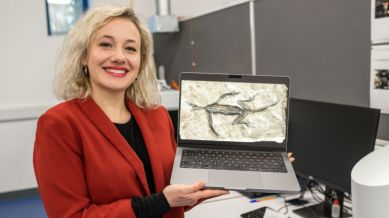Oldest reptile fossil from the Alps is fake, say researchers who solved the mystery
Researchers have solved a decades-old enigma of the oldest reptile fossil found in the Alps, which turned out the be a fake.

What seemed to be a 280-million-year-old fossil has been baffling researchers for decades but now, it has been shown to be, at least in part, a forgery, after the remnants were reexamined.
The Tridentinosaurus antiquus was discovered in 1931 in the Italian Alps and was believed to be an important specimen for understanding early reptile evolution. Its body outline appeared dark against the surrounding rock and was earlier interpreted as preserved soft tissues. Due to this, it was classified as a member of the reptile group Ptorosauria.
“Fossil soft tissues are rare, but when found in a fossil they can reveal important biological information, for instance, the external colouration, internal anatomy and physiology. The answer to all our questions was right in front of us, we had to study this fossil specimen in details to reveal its secrets – even those that perhaps we did not want to know,” said coauthor Valentina Rossi of University College Cork in a press statement.
After putting the fossil under a microscope, the researchers found that the texture and composition of the material did not match that of actual fossilised soft tissues. UV photography was used for a preliminary investigation revealed that the specimen was treated with some sort of coating material.
In the past, some fossils were treated with varnishes or lacquers to preserve a fossil specimen in museum cabinets and exhibits. The hope was that the origin soft tissues would still be in good condition under the coating layer. This would have allowed them to extract meaningful information from it.
But the study’s results indicate that the body outline of the fossil was artificially created to enhance the appearance of the fossil. This deception fooled many researchers in the past and still has the potential to do so in the future.